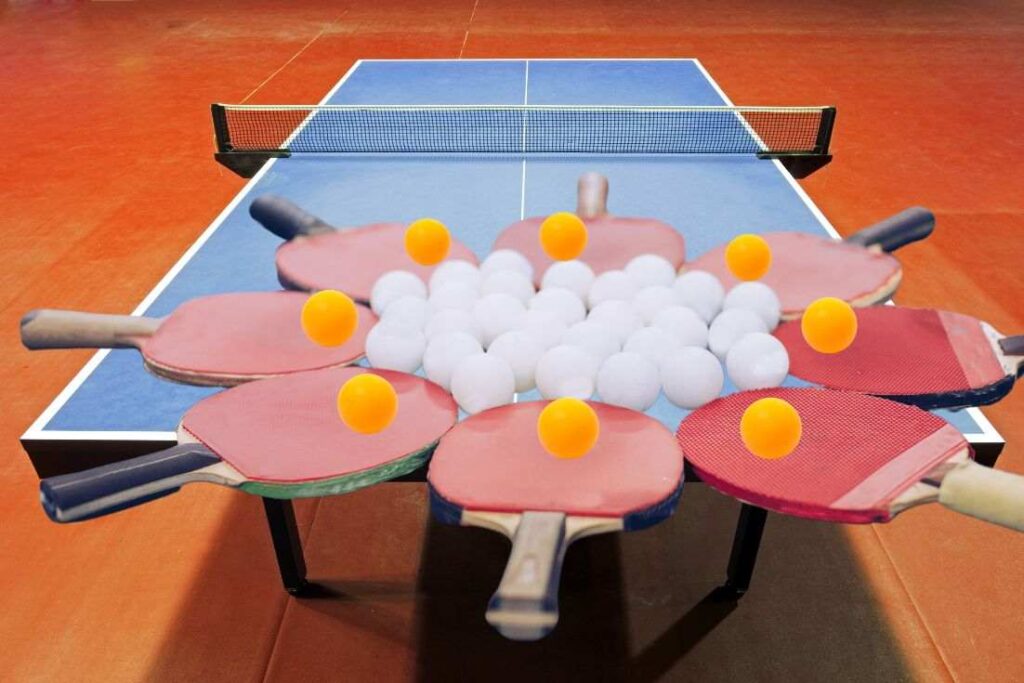Step into a world where every table tennis ball description isn’t just about specs—it’s about unlocking a unique playing experience. Explore how materials shape your game, colors inspire strategy, and bounce properties set the pace of each match.
Learn how surface textures and seam designs enhance your control and finesse, making every rally a showcase of skill. Discover trusted brands that embody excellence, ensuring every game reflects your passion.
Beyond technical details, our guide fosters a personal connection with your equipment. Join us as we delve into the art and passion behind table tennis ball description, empowering you to elevate your game and savor every moment on the court.
ITTF Regulations and Standards for Table Tennis Ball Descriptions
The International Table Tennis Federation (ITTF) sets stringent regulations to ensure standardized table tennis ball specifications. The size and weight requirements demand a spherical ball with a 40mm diameter and a weight of precisely 2.7g. Material specifications dictate the use of celluloid or similar plastics for manufacturing, ensuring consistent play quality and durability. Quality control measures and certification procedures are in place to guarantee adherence to these standards, validating the accuracy of ITTF regulations.
Materials Used in Table Tennis Balls
Table tennis balls have evolved in material composition over the years. Historically, celluloid was the primary material, known for its lightweight, durable, and consistent bounce characteristics. However, celluloid had drawbacks, including flammability and production challenges. In 2014, a pivotal transition occurred, replacing celluloid with plastic as the standard material for table tennis balls. Two main types of balls are present in modern plastic balls: Poly (seamless) plastic balls and ABS plastic balls, each with distinct characteristics. Poly balls are seamless, providing a consistent bounce, while ABS balls prioritize durability with a seam.
Pros and Cons of Different Materials:
- Celluloid Balls:
- Pros: Lightweight, consistent bounce.
- Cons: Flammable, production challenges.
- Poly (Seamless) Plastic Balls:
- Pros: Consistent bounce, improved durability.
- Cons: Limited seam options.
- ABS Plastic Balls:
- Pros: Durable, available with seams.
- Cons: Slightly less consistent bounce.
Color Options and Significance in Table Tennis Balls
Table tennis balls, available in either white or orange, play a pivotal role in tournament competition. The selection between these colors significantly influences gameplay dynamics. Opting for white balls is ideal in well-lit environments with light-colored floors and surroundings, ensuring optimal visibility during the tournament. On the contrary, in darker settings, players lean towards orange balls to enhance visibility, maintaining a competitive edge. The choice between white or orange balls becomes a strategic decision that directly impacts the outcome of the tournament match, emphasizing the importance of color selection in the competitive world of table tennis.
Importance of Recognizing Standard Ball Colors:
- White Balls:
- Suitable for light-colored environments.
- Orange Balls:
- Preferable in darker playing environments.

Bounce and Rebound Properties in Table Tennis Balls
Understanding the physics of a table tennis ball’s bounce is crucial for players and enthusiasts. The bounce is influenced by factors like ball composition, surface, and impact force. According to ITTF regulations, a standard table tennis ball must have a bounce height of 23cm when dropped from a height of 30cm. These rules and regulations ensure a consistent playing experience. A detailed table tennis ball description covers properties such as size, material, and seam, which directly impact gameplay, affecting spin, speed, and control.
Key Points:
Physics of Bounce: Influenced by composition, surface, and impact force.
ITTF Regulations: Standard bounce height: 23cm from a 30cm drop.
Impact on Gameplay: Properties affect spin, speed, and control.
Surface Texture and Seam in Table Tennis Balls
Table tennis balls have a smooth surface, critical for fair gameplay. The seam, a visible line on some balls, results from the manufacturing process. While most modern balls are seamless, those with seams affect spin generation. The seam disrupts airflow, influencing the ball’s trajectory and enhancing spin capabilities. Professional Players exploit ball texture, using the seam or variations in surface texture for strategic spin and control.
Ball Brands and Quality in Table Tennis
Recognizing reputable table tennis ball manufacturers is crucial for optimal gameplay. Established brands like JOOLA, Butterfly, and DHS are known for producing high-quality balls. Using such balls is significant as they offer superior bounce, spin, and durability, enhancing the overall playing experience. It is essential to avoid counterfeit or subpar balls, as they can negatively impact performance and wear quickly.
Environmental Impact and Sustainability of Table Tennis Balls
Recognizing reputable table tennis ball manufacturers is crucial for environmental sustainability. Brands like JOOLA and Butterfly are increasingly prioritizing eco-friendly practices. Sustainable alternatives, including balls made from recycled materials, are gaining popularity. Players can contribute to sustainability by choosing responsibly sourced balls and advocating for eco-friendly options.
Ball Care and Maintenance: A Simple Guide
Proper care and maintenance of table tennis balls are essential for optimal performance. Cleaning balls with a damp cloth helps remove dust and dirt, preserving their integrity. Common misconceptions, like using harsh chemicals or water saturation, can harm the balls, so it’s vital to avoid these practices. To extend the lifespan of your balls, store them away from direct sunlight, extreme heat, and moisture.
In summary
Understanding table tennis ball descriptions is vital for players aiming for peak performance in international competitions. Summarize essential insights, highlighting factors such as hardness, roundness, and consistency as outlined in the official rules. Acknowledge how these characteristics significantly influence gameplay, underscoring the importance for players to align their preferences with the ball’s attributes.
Experimenting with different balls becomes crucial in international competition, enabling players to discover the ideal match tailored to individual playing styles. This process ensures optimal performance and adherence to the official rules of the game, both in casual games and international competitions.










